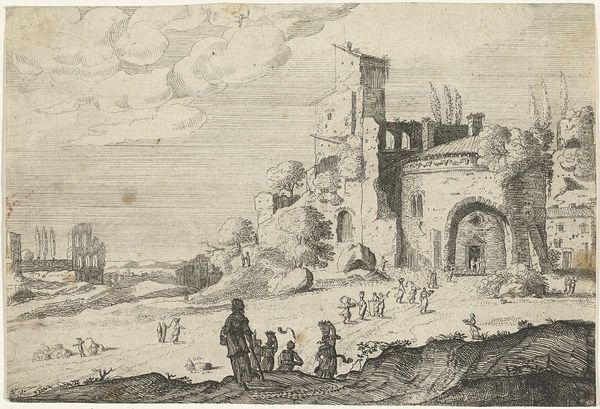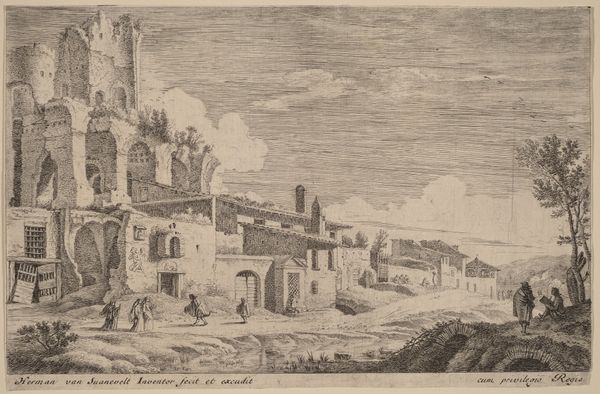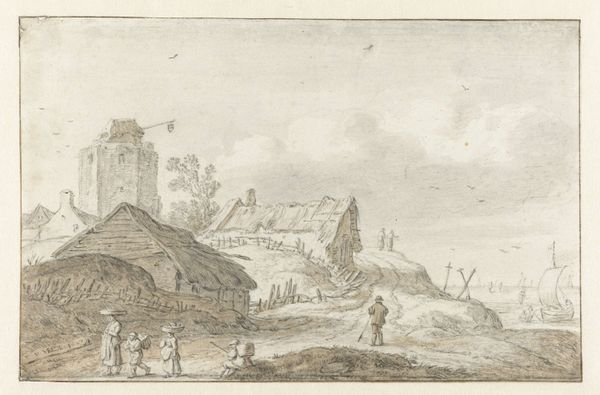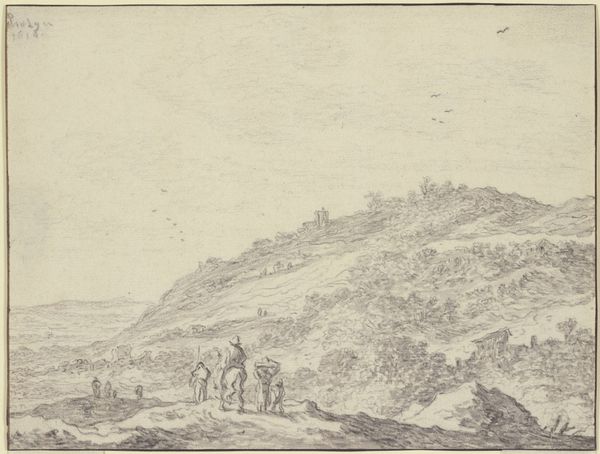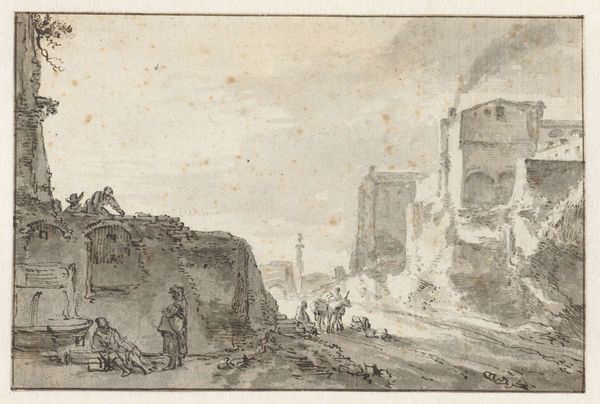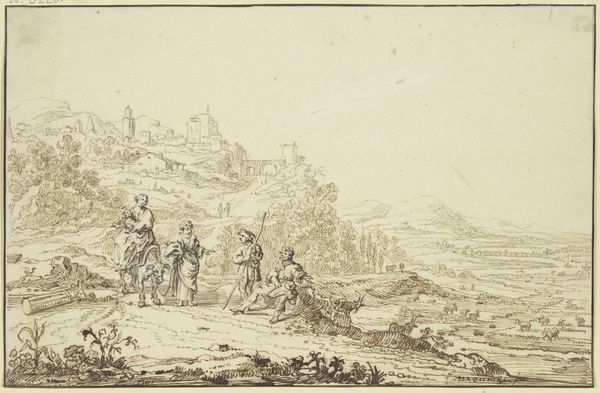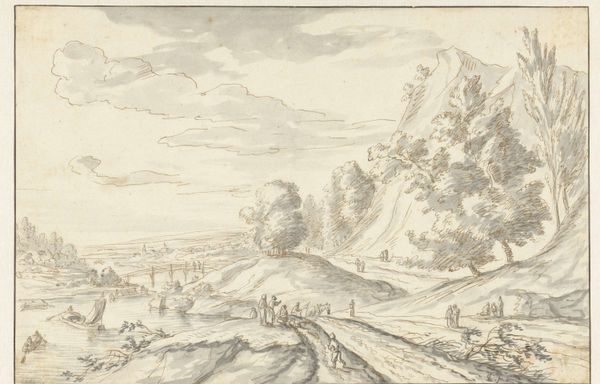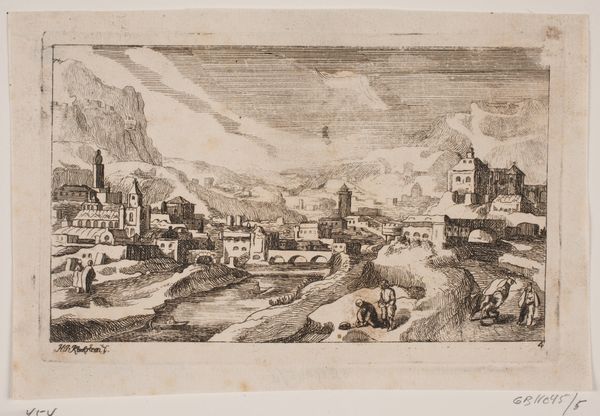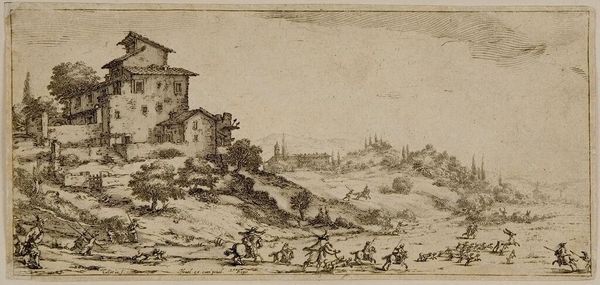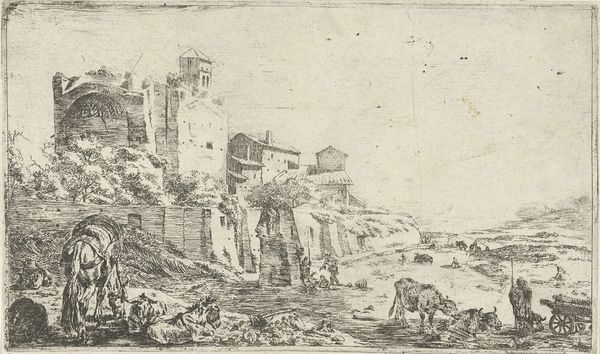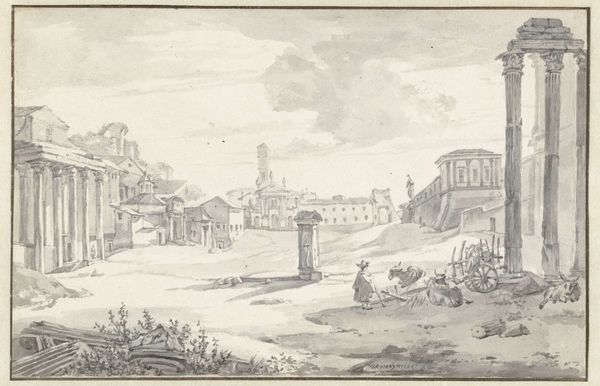
drawing, ink, pen
#
drawing
#
toned paper
#
quirky sketch
#
dutch-golden-age
#
pen sketch
#
sketch book
#
landscape
#
personal sketchbook
#
ink
#
pen-ink sketch
#
pen work
#
sketchbook drawing
#
pen
#
cityscape
#
storyboard and sketchbook work
#
sketchbook art
#
realism
Dimensions: height 152 mm, width 231 mm
Copyright: Rijks Museum: Open Domain
Willem Romeyn created this drawing, "View of the Tiber Bank," using pen, brush, and gray ink, likely in the mid-17th century. Romeyn, though Dutch, was part of a wave of Northern European artists drawn to Italy, where the light and classical ruins held a powerful allure. What strikes me about this seemingly straightforward landscape is how it subtly encodes power dynamics. The ruins, remnants of the Roman Empire, speak of past glories, while the humble figures on the riverbank – resting with their animals – represent the everyday life that continues amidst these historical echoes. The people seem almost part of the landscape, their identities perhaps overshadowed by the imposing history surrounding them. Is Romeyn romanticizing their existence, or is he offering a commentary on the enduring spirit of the common person in the face of grand narratives? This view isn't just a depiction of a place; it's a meditation on history, identity, and the enduring human connection to the land.
Comments
No comments
Be the first to comment and join the conversation on the ultimate creative platform.
